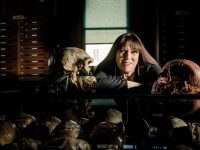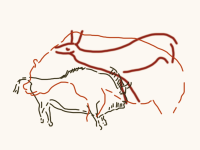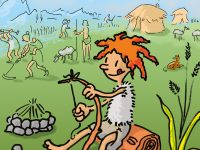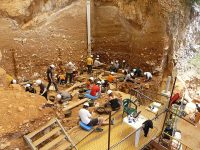Altamira, a matter of time
L’estrena de la pel·lícula converteix en actualitat la història del seu descobriment
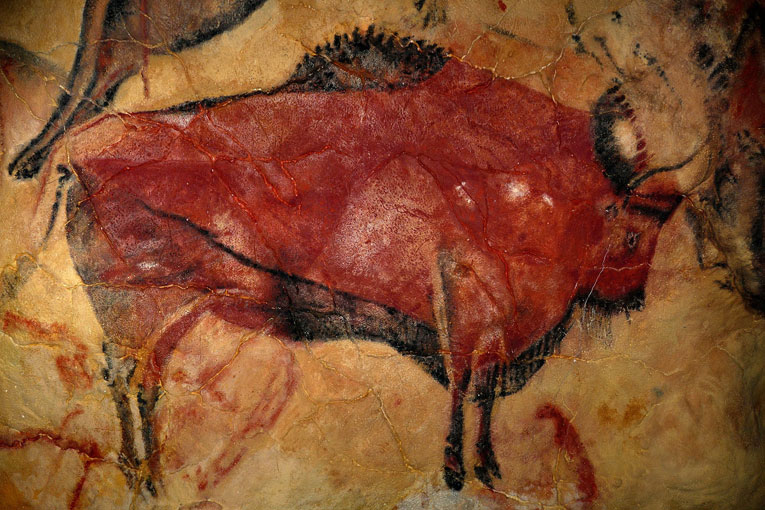

FINDING THE CAVE
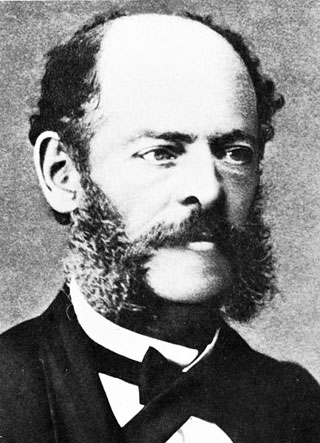
Juan Vilanova y Piera was one of them. He was a Valencian geologist and professor of palaeontology at the University of Madrid. Together with Sautuola, he passionately defended the authenticity of the findings and demanded a proper study of the cave. In September 1880, Vilanova inspected the findings in situ and became their main advertiser. Shortly after, Vilanova and Sautuola presented the discovery to the public at the ix International Congress of Prehistoric Anthropology and Archaeology that was held in Lisbon that same year. There, they met Cartailhac. Vilanova showed the audience drawings of some of the cave paintings and found nothing but disbelief. Cartailhac left the room in a very noticeable fashion to show his scepticism and condemned both of them to ostracism. Later on, they would even be accused of forging the engravings themselves. In 1902, 22 years after, Cartailhac published in the French journal L’Anthropologie a brief text titled La grotte d’Altamira, Espagne. Mea culpa d’un sceptique where he tried to do some justice to Sautuola and Vilanova. In the light of later evidence, he admitted that his initial assessment had been wrong. Sautuola had been dead for fourteen years and Vilanova for nine, both of them «in the most absolute disrepute», according to the article published in El País by Francisco Pelayo, researcher of Science History at the Spanish National Research Council.
THE SCIENTIFIC AND CULTURAL CONTEXT AT THE TIME OF THE FINDINGS
Evolutionism arrived to Spain during the 1868 Revolution, after years of suppression under the reign of Isabel II. It promptly became a debate that caused the ideological polarization of society from that period. According to Jesús Català, professor at the CEU Cardenal Herrera University of Valencia, evolutionism was often defended «without any critical thinking» by anticlerical and generally progressive sectors, while it was «also quite viscerally refuted by traditionalists, who thought of it as a dangerous threat to the hegemonic belief system that had shaped Spain’s society». The context surrounding the last third of the nineteenth century was also influenced by the vindication of science as a critical element in the social and political order, an idea endorsed by several ideologies and systems of thought more or less close to positivism. Even though «this debate involves religious views, these are related to a sociopolitical context that goes beyond theology and morals» Català maintains.
In 1871, Charles Darwin published The descent of man, and selection in relation to sex, in which the English naturalist addressed the evolution of the human species. Darwin put the native people of Tierra del Fuego and the ancestors of the modern man in the same category, creatures he defined as savage and distrustful, who «barely possessed any art». How could the Altamira paintings be authentic? For Cartailhac and most of his fellow French colleagues, it was nothing but an attack to darwinism orchestrated by the Church from Spain. The idea of progressiveness in evolution could not tolerate a case that clearly showed aesthetic sense and complex intent, which «questioned the process of slow gradualness that should have ruled the changes», Jesús Català says. Valentín Villaverde, palaeontology and archaeology professor at the University of Valencia, remarks that the portable art from the Palaeolithic consisting of stone and bones objects, whose discovery took place many years before Altamira’s, did not cause any controversy. It was considered merely a craft, with no social or ideological significance. It was just the result of the crafting skills of Palaeolithic populations and all the free time they had available. On the other hand, cave decoration in areas deprived of light implied a different explanation, which certainly involved the world of magic and beliefs.
The idea that humanity possessed religious sentiment so early on fitted quite well the first documentation found on funeral rites and magic beliefs. Parietal art was a powerful argument for the supporters of this proposal. In that sense, the religious world felt comfortable with the idea. Even so, the most retrograde and conservative sector of the Church was concerned in the light of a discovery that could shake the creationists foundations which held the Catholic doctrine up. Those who defended a literal reading of the biblical stories had even a date picked to mark the creation of the world, which did not contemplate the prehistoric human at all. However, we should not reduce everything to a simple black-or-white story where science and Church stand in opposite poles. As Jesús Català points out, «even if there are some isolated cases that write off scientific knowledge as pernicious, they are exceptions». The eagerness to promote science through educational and scientific institutions was one of the key principles for many religious orders, «as the Society of Jesús has clearly illustrated». Although we should not forget that «the intention of the Church is to spread science that fits perfectly and harmoniously with its own doctrines» Català remarks.
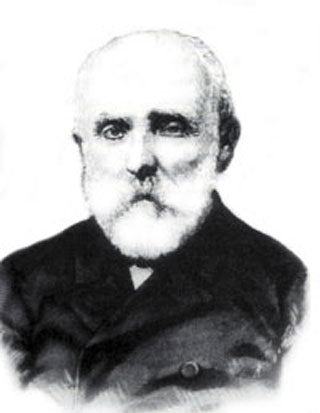
In his «mea culpa», Émile Cartailhac stressed that the paintings raised serious doubts at the time. Doubts that are quite understandable if we go through all the theories explaining the origin of the paintings that went around. For instance, there was the one supported by Torres Campos and Quiroga Rodríguez after they had explored the cave for an assignment of the Free Educational Institution. They dated the paintings between the first century BC and the first century AC. Their thesis was that, after the second Cantabrian war, the Altamira Cave might have been inhabited by Romans that spent their leisure time painting deers, horses and bisons. A different theory was sustained by Eugenio Lemus y Olmo, director of the National Chalcography. After visiting the cave, he accused Vilanova of fraud, saying that those paintings were similar in style to any others produced by an average modern artist. He even insinuated a possible involvement of the mute French painter Rater, who had visited the area around the time of the discovery. Valentín Villaverde insists on the fact that the commission in charge of the report on the authenticity of the paintings did not have any verified, technical criteria. Their very subjective arguments were based on observing the paintings, how well-preserved they were and the complexity of the techniques that must have been used in their completion. Their judgement was biased by the belief that prehistoric human groups had a very simple mental and technical capacity.
WHAT HAS HAPPENED SINCE THEn
The truth eventually found its way out when new caves with parietal paintings were found, especially in France, such as Pair-non-Pair (1881), Figuier (1890) and La Mouthe (1895). In fact, the engravings present in the first and the last cave were found under Palaeolithic layers, so they could not be put into question. The cave of Les Combarelles in 1901 or Font-de-Gaume and its spectacular bisons would tip the scales in the case of Altamira. A year late, a young priest named Henri Breuil, the most important prehistorian of the first half of the twentieth century, said the final word on the matter with a complete study of the parietal art present in all these caves, including Altamira. After all this, Cartailhac finally issued his «mea culpa». From this moment on, the interpretation of Palaeolithic art stopped being a negligible phenomenon. Many theories developed around it, which linked its existence to magical uses. Many voices, as well, stressed the invaluable information provided by these paintings about the beliefs of those who performed them.
Later on, this discipline has progressed along with geology and palaeontology, providing the chronological framework for anthropological and cultural changes, professor Villaverde tells us. He is an expert in these advances thanks to his research in archaeological sites since the 80s. From the second half of the twentieth century, improvements in dating techniques and archaeometry have facilitated the elaboration of a chronological framework that is consistent with the vision of this process held by the field of biology. Around the same period, prehistoric archaeology became a well-established scientific and interdisciplinary field. Connections were born and strengthened with molecular biology, physics and other disciplines, which helped in the documentation, study and contextualisation of archaeological remains. While archaeological information is rich in resources in order to explain human behaviour according to evolution, palaeontological data has been quite scarce during a good part of the twentieth century, a fact that has held back a similar understanding of the human evolutionary progress. «Despite everything, in the last few decades we have seen a remarkable increase of palaeontological remains that have inspired a profound review of some ideas formulated in earlier stages» Villaverde points out. As more and more human fossils were found and verified, the darwinist idea of human evolution consolidated and was introduced in other disciplines. The discovery of the Homo erectus, the Australopithecus and other types and species have confirmed the changes anticipated by the theory of evolution.
Nowadays, our understanding of human evolution has made great progress thanks to, among other factors, the study of places like Altamira. The work in this site and many others that have been discovered since has allowed us to draft a history line of evolution, which grows more and more complete: new findings have added information and corrected errors. The case of Altamira and the following rectification of Cartailhac, even if too late for its recipients, made clear that evidence eventually sets the record straight in the scientific discourse, although it takes time. But it also shows how science is surrounded by a social and cultural context, where objectivity and verified facts do not always prevail. Science may be always right, but scientists might not. As it would seem, we always take some steps in the wrong way before turning to the right direction.
THE DEBATE CONTINUES
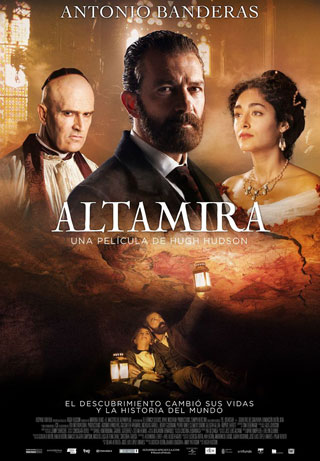
If we can learn something about this story is that past, present and even future have many similarities. Current difficulties to judge how open visits affect the preservation of these paintings involve elements that, then again, surpass the theoretical framework of scientific evidence. It was only a matter of time until Vilanova and Sautuola’s work got its proper recognition, until mistakes were brought to light and evidence prevailed thanks to new findings and technical achievements. It will also be a matter of time until the Altamira paintings disappear due to the loss of pigment caused by the action of water and the microorganisms that inhabit the cave. No one can tell if during this indefinite amount of time, the effect of human presence will be relevant or incidental. At least, not until damage is done. Every time we look back, we can see that every wise choice comes after a good deal of mistakes. This is why we should be very cautious with the decisions we make, since the right one usually takes some time. Time that we might not always have, as it might happen to the beautiful Altamira paintings.
Matías Gabarrón Pérez. Philosopher and student of the Master’s Degree in History of Science and Scientific Communication. University of Valencia.
© Mètode 2016.

